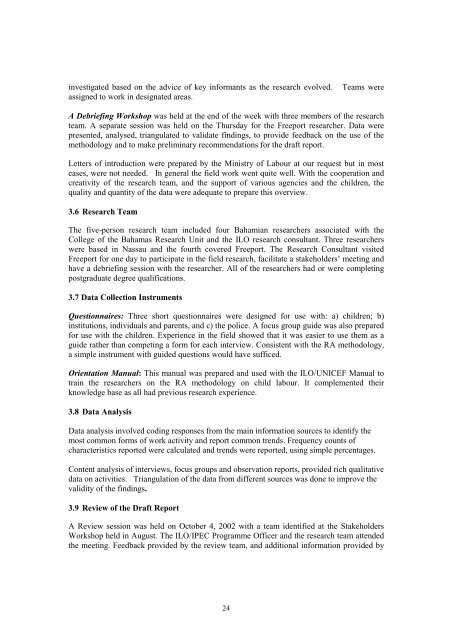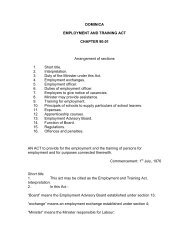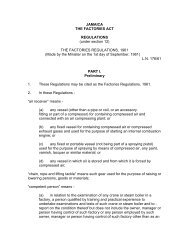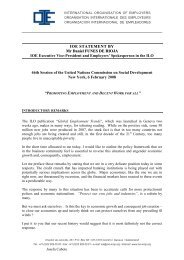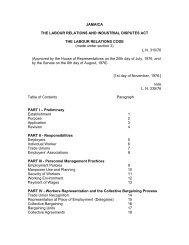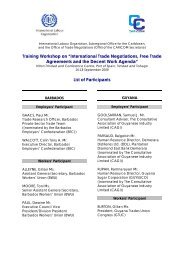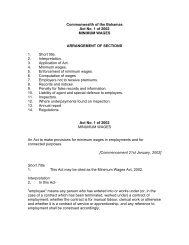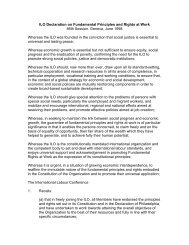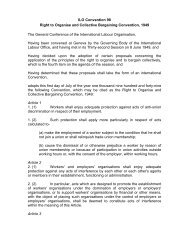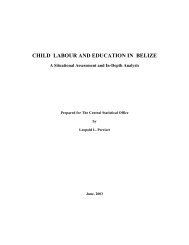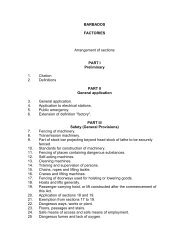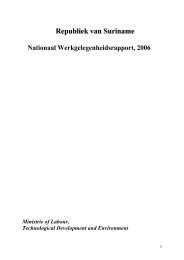ILO REPORT ON CHILD LABOUR IN BARBADOS - International ...
ILO REPORT ON CHILD LABOUR IN BARBADOS - International ...
ILO REPORT ON CHILD LABOUR IN BARBADOS - International ...
You also want an ePaper? Increase the reach of your titles
YUMPU automatically turns print PDFs into web optimized ePapers that Google loves.
investigated based on the advice of key informants as the research evolved. Teams were<br />
assigned to work in designated areas.<br />
A Debriefing Workshop was held at the end of the week with three members of the research<br />
team. A separate session was held on the Thursday for the Freeport researcher. Data were<br />
presented, analysed, triangulated to validate findings, to provide feedback on the use of the<br />
methodology and to make preliminary recommendations for the draft report.<br />
Letters of introduction were prepared by the Ministry of Labour at our request but in most<br />
cases, were not needed. In general the field work went quite well. With the cooperation and<br />
creativity of the research team, and the support of various agencies and the children, the<br />
quality and quantity of the data were adequate to prepare this overview.<br />
3.6 Research Team<br />
The five-person research team included four Bahamian researchers associated with the<br />
College of the Bahamas Research Unit and the <strong>ILO</strong> research consultant. Three researchers<br />
were based in Nassau and the fourth covered Freeport. The Research Consultant visited<br />
Freeport for one day to participate in the field research, facilitate a stakeholders’ meeting and<br />
have a debriefing session with the researcher. All of the researchers had or were completing<br />
postgraduate degree qualifications.<br />
3.7 Data Collection Instruments<br />
Questionnaires: Three short questionnaires were designed for use with: a) children; b)<br />
institutions, individuals and parents, and c) the police. A focus group guide was also prepared<br />
for use with the children. Experience in the field showed that it was easier to use them as a<br />
guide rather than competing a form for each interview. Consistent with the RA methodology,<br />
a simple instrument with guided questions would have sufficed.<br />
Orientation Manual: This manual was prepared and used with the <strong>ILO</strong>/UNICEF Manual to<br />
train the researchers on the RA methodology on child labour. It complemented their<br />
knowledge base as all had previous research experience.<br />
3.8 Data Analysis<br />
Data analysis involved coding responses from the main information sources to identify the<br />
most common forms of work activity and report common trends. Frequency counts of<br />
characteristics reported were calculated and trends were reported, using simple percentages.<br />
Content analysis of interviews, focus groups and observation reports, provided rich qualitative<br />
data on activities. Triangulation of the data from different sources was done to improve the<br />
validity of the findings.<br />
3.9 Review of the Draft Report<br />
A Review session was held on October 4, 2002 with a team identified at the Stakeholders<br />
Workshop held in August. The <strong>ILO</strong>/IPEC Programme Officer and the research team attended<br />
the meeting. Feedback provided by the review team, and additional information provided by<br />
24


